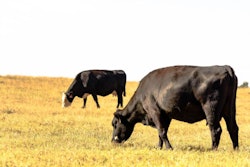
FDA’s first cell-cultured meat approval could mark the beginning of a food revolution worldwide.
As the world’s population inches toward 9 billion people, the food industry must adapt to meet the growing population’s nutritional needs. Alternative foods, such as plant-based options have been growing in consumer favorability over the past five years and now the appetite is increasing for innovative and healthy choices, including cultivated meat.
A growing number of consumers are seeking sustainable and ethical alternatives to animal protein, and cultivated meat has emerged as a viable answer these concerns. And with U.S. Food & Drug Administration’s (FDA) approval of UPSIDE Foods’ cultivated chicken, the agency has signed off on the safety of these products, paving the way for consumers to access cultivated meat products in U.S. restaurants and retail.
The FDA also completed its second voluntary premarket consultation, after recently citing “no further questions” regarding the safety of GOOD Meat Inc.’s cell-cultured products.
The Good Food Institute anticipates the first launch of cultivated meat will happen in the United States before the end of 2023. With this significant step of the regulatory approval process complete, UPSIDE Foods has moved on to securing a U.S. Department of Agriculture (USDA) grant of inspection.
 Courtesy SuperMeat
Courtesy SuperMeatRegulatory oversight of cultivated meat
Food scientist Dr. Angela Shaw, professor at Texas Tech University’s Department of Animal and Food Sciences, supports innovations in food technology that will increase the amount of safe and nutritious food for consumption.
But how do food policies, like the phytosanitary provisions outlined in the Food Safety Modernization Act (FSMA), apply to food categories that did not exist when the laws were written?
Shaw explained how FSMA shifts the focus of foodborne illness response from simply reacting to outbreaks to preventing them. The regulation requires food companies to have a risk-based, research-based approach to ensuring the safety of their food, regardless of the food type or how it’s manufactured.
“FSMA’s Preventive Controls for Human Food Sanitary Controls focuses on the procedures, practices and processes to ensure that the facility is maintained in a sanitary condition to minimize or prevent hazards,” Shaw said. “All foods must meet these standards regardless of the method of producing them. The flexibility in these standards provides cell-cultured meats or any other new category of food to meet these standards.”
Cell-cultured meat may also be more resilient or resistant to microbiological contamination than traditional animal protein, according to Osnat Shostak, head of business development for SuperMeat.
SuperMeat is a food tech company working to supply the world with high-quality cultivated meat grown directly from animal cells. Specializing in poultry, SuperMeat creates chicken that matches the nutritional profile, taste and quality of traditionally processed poultry, in a more sustainable, cost-effective, slaughter-free way.
“Chicken can be a source of foodborne illness,” said Shostak. “Chicken, like other types of meat, can harbor harmful bacteria, such as Salmonella and Campylobacter, that can cause food poisoning if the meat is not properly handled, cooked and stored. In order to address some of these contamination challenges, chickens are given antibiotics.
“One of the great benefits that the cultivated meat industry introduces to the meat industry for the first time is the ability to produce in a completely industrialized and closed system, introducing a meat production process that doesn’t require any antibiotics and drastically reduces foodborne illnesses due to the removal of the contaminants from the manufacturing process and providing a fully monitored and traceable process.”
 Courtesy SuperMeat
Courtesy SuperMeatAnimal-free future could reduce diseases
Dr. David Kaplan, distinguished professor, Tufts University School of Engineering, said over time, it’s plausible that cultivated meat could be cultured from cells of previously cultivated meat.
Cultured meat proponents argue that eliminating meat animal populations would enhance food safety by reducing our vulnerability to outbreaks of diseases like African swine fever and Highly Pathogenic Avian Influenza (HPAI).
“The goal is to develop cells that can be immortalized, stored and used, or harvested from grown meat and used again, once the safety and stability of the cells is demonstrated,” Kaplan said.
Widespread adaptation of cultivated meat would eventually reduce the number of herds and flocks in existence, making it easier to control the spread of harmful pathogens and to respond quickly to food supply threats. However, Shaw noted that the same biosecurity rules apply to both cultivated and conventional meat manufacturers.
“The USDA has provided excellent guidance to the meat and poultry industry to support the reduction in African swine fever and HPAI,” Shaw said. “Biosecurity plans are key in all food industries to prevent the spread of all viruses and microorganisms of harm throughout the food chain. I support the food industry and consumers’ choice in food products and believe that safety is key regardless of the food type.”
Future of protein = plant-based + cultivated meat
The Kaplan Lab at Tufts University has many research activities ongoing with Kaplan’s colleagues, ranging from cultivating new cells from different animal species for the field, to developing lower cost media, to scaling up innovation and conducting life cycle assessments.
Meanwhile, SuperMeat’s Shostak noted several alternative protein markets are showing promise with consumers, including plant based and fungi-based proteins, which will complement the cultivated meat movement.
“Cultivated meat is going to be a game changer for the alternative protein market and plant-based products can be further enhanced with cultivated meat by replacing unwanted ingredients and improving overall taste, texture, and functionality,” Shostak said. “This is setting the stage for mass adoption in the near future.”
Today’s cultured meat victory of gaining FDA’s seal of approval could be the beginning of a food revolution. As investment and research continues to help uncover breakthroughs in cultured meat technology, consumers and the environment stand to benefit from these emerging food choices.
Top factors driving consumer interest in cultivated meat
SuperMeat recently conducted a survey targeting American chefs, revealing that 86% of them expressed an interest in offering cultured meat or poultry to their customers, with 51% of respondents citing food safety as their primary incentive.
Other motivating factors that piqued the interest of foodservice establishments in this category included the environmental advantages, consumer demand, and the ability to control taste and texture. Here are the leading factors driving consumer interest in cultivated meat, according to Osnat Shostak, head of business development for SuperMeat.
- Taste and flavor: Through fermentation processes, SuperMeat can produce genuine meat that offers the same attributes as conventionally raised chicken and meet the standards of discerning consumers when it comes to taste, texture, complete protein and other factors.
SuperMeat also previously held the largest consumer sampling of cultivated meat to date via food truck – providing an industry-first look into the real-life scenario of consumers faced with a choice between cultivated and traditional meat – with 71.8% of participants choosing the cultivated option. The sampling showcased the potential for adoption from various consumers, including meat-eaters, reducetarians and vegetarians alike, once learning about the production processes and ingredients.
- Sustainability: The traditional animal agriculture industry is facing pressure to increase production of meat in response to population growth and rising incomes, leading to a surge in demand for meat across many parts of the world. However, the industry won’t be able to meet this demand due to limited resources. Consequently, cultivated meat may offer a more sustainable and efficient approach to meeting the escalating demand for meat.
In a life-cycle assessment (LCA) of cultivated meat conducted by CE Delft, the company concluded that cultivated meat could offer environmental gains compared with conventional meats. It uses much less land compared with all conventional meats and has lower nitrogen-related emissions in all scenarios, due to much improved feed conversion. When production scales up and further advances, we will likely see an even lower carbon footprint for cultivated meat.
- Competitive pricing: With technological advancements, it has become feasible to produce cultivated meat at scale, and as the industry grows and achieves economies of scale, it can be offered at a competitive price point. These developments are likely to make it more attractive to consumers.
- Transparency and consumer awareness: SuperMeat launched the world’s first production-to-fork facility, where consumers can watch the entire production process as they enjoy a cultivated meat meal. This approach has been successful in educating consumers about the potential of cultivated meat and easing any concerns they may have.

















